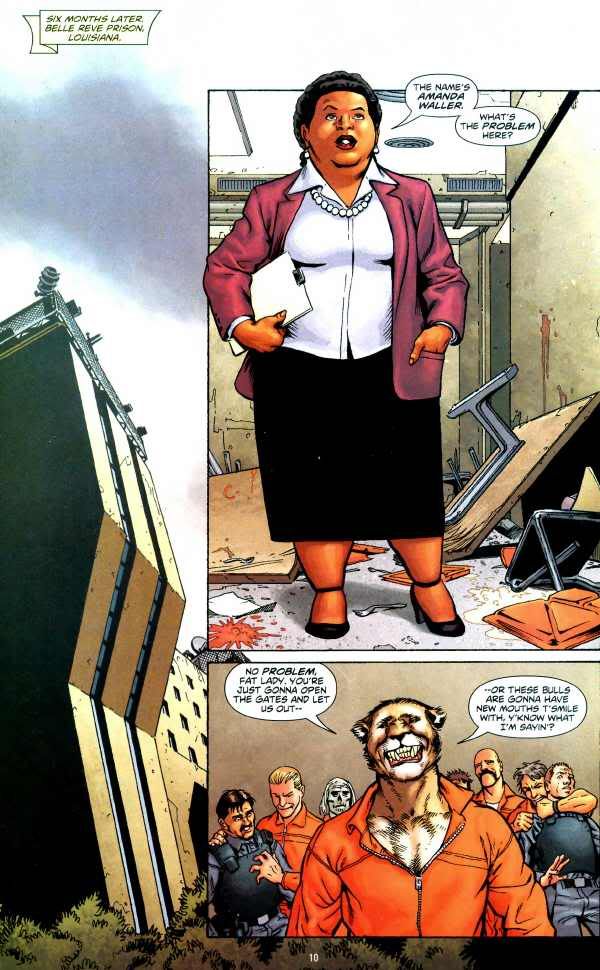

The first John Ostrander comic I ever read was an issue of "Legends," but I consider my true introduction to be "Grimjack." I hated that first issue, in part because it was a political satire in the hands of an oblivious twelve year old. Second chances turned "Grimjack" into one of my favorite series in my teenage years. I blame the fact that I once had a mullet on Jim Twilley, but we didn't even have a name for them back then. I followed Ostrander on several other series, and once thought of him as among the finest writers in comics, until I spent three years with my nerves racked by his horrendous run on "Martian Manhunter." I so hated and found such great fault in that book, it called into question whether Ostrander was ever any good. Maybe it was just a temporary lapse in taste, like the years I wasted following Rob Liefeld?
Blessedly, Ostrander's return to another much-lauded series, Suicide Squad, calmed any fears about my judgment. The new mini-series launched with a time capsule back to the days when the U.S.S.R. was still the Evil Empire, with great fun being had with long forgotten menaces like the People's Heroes. From there, the focus tightens on Rick Flag, the presumed dead hardcase leader of the comic book equivalent of the Dirty Dozen. It's a credit to Ostrander's ability that his plot was engaging enough that I didn't mind spending much of the trade with one of the least interesting members of the Squad. In fact, if there's any flaw to be found here, it's that we spend too little time with favorites like Amanda Waller and Deadshot, though they're perfectly handled again when they do show. The absence of the real Captain Boomerang is also deeply felt, but at least his son offers a nod and a new dynamic. Once a contemporary team is in place, the action expands and is as fast and furious as ever.
Since so few former members of the Squad were made available to Ostrander, he had to dig up mothballed losers like Twister and Windfall. However, he offers them new history and motivations that turn them into fascinating figures at the turn of a page. Classic members may be gone, but the magic most definitely is not. Folks may be surprised at the body count when everything comes to a head. The familiar double dealing and sordid revelations are a glory to behold.
So to is the art of Javier Pina. Had DC tapped him to finish "Final Crisis" in the stead of J.G. Jones, I'm not sure readers would have missed the beat. This low-selling mini-series was done a real disservice by the retro covers of John K. Snider, which might have played like Matt Wagner on "Green Arrow" is the title were similarly high profile. Instead, I expect most presumed the interiors were as crude as the frontpieces, where Pina's interior art is lush and graceful. He's a talent I expect to hear more from. Pina had a few deadline troubles of his own, which Jesus Saiz covered capably. Less so Robin Riggs, a fantastic inker, but not the pencil artist one would approve of in this company. A nod must also be given to Jason Wright, whose color work is lovely. Art fans would be well served to pick up the book on their merits alone.
I've been disappointed by the Checkmate revival and the general direction of DC Comics since "Infinite Crisis." It seems like a lot of cues have been taken from the '80s Suicide Squad, and as with the legacies of books like "Watchmen" and "Dark Knight Returns," they only match the sizzle of this steak. Do yourself a favor and read one of the only recent DC trades worth the effort.


No comments:
Post a Comment